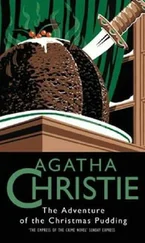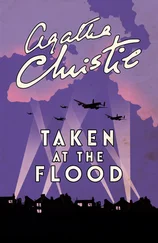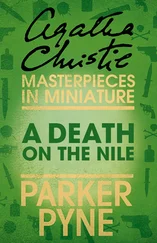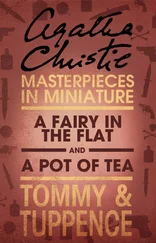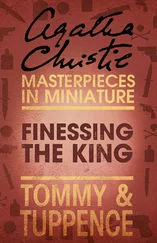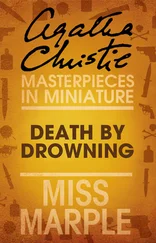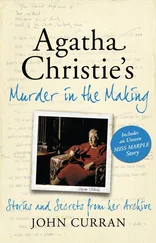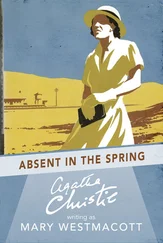Agatha Christie - Death in the Clouds
Здесь есть возможность читать онлайн «Agatha Christie - Death in the Clouds» весь текст электронной книги совершенно бесплатно (целиком полную версию без сокращений). В некоторых случаях можно слушать аудио, скачать через торрент в формате fb2 и присутствует краткое содержание. Жанр: Классический детектив, на английском языке. Описание произведения, (предисловие) а так же отзывы посетителей доступны на портале библиотеки ЛибКат.
- Название:Death in the Clouds
- Автор:
- Жанр:
- Год:неизвестен
- ISBN:нет данных
- Рейтинг книги:3.5 / 5. Голосов: 2
-
Избранное:Добавить в избранное
- Отзывы:
-
Ваша оценка:
- 80
- 1
- 2
- 3
- 4
- 5
Death in the Clouds: краткое содержание, описание и аннотация
Предлагаем к чтению аннотацию, описание, краткое содержание или предисловие (зависит от того, что написал сам автор книги «Death in the Clouds»). Если вы не нашли необходимую информацию о книге — напишите в комментариях, мы постараемся отыскать её.
Death in the Clouds — читать онлайн бесплатно полную книгу (весь текст) целиком
Ниже представлен текст книги, разбитый по страницам. Система сохранения места последней прочитанной страницы, позволяет с удобством читать онлайн бесплатно книгу «Death in the Clouds», без необходимости каждый раз заново искать на чём Вы остановились. Поставьте закладку, и сможете в любой момент перейти на страницу, на которой закончили чтение.
Интервал:
Закладка:
"One idea presented itself very strongly to me – as it did to everyone else – and that was the audacity of a crime being committed in such a manner, and the astonishing fact that nobody noticed its being done!
"There were two other points that interested me. One was the convenient presence of the wasp. The other was the discovery of the blowpipe. As I remarked after the inquest to my friend Japp, why on earth did the murderer not get rid of it by passing it out through the ventilating hole in the window? The thorn itself might be difficult to trace or identify, but a blowpipe which still retained a portion of its price label was a very different matter.
"What was the solution? Obviously, that the murderer wanted the blowpipe to be found.
"But why? Only one answer seemed logical. If a poisoned dart and a blowpipe were found, it would naturally be assumed that the murder had been committed by a thorn shot from a blowpipe. Therefore, in reality the murder had not been committed that way.
"On the other hand, as medical evidence was to show, the cause of death was undoubtedly the poisoned thorn. I shut my eyes and asked myself: 'What is the surest and most reliable way of placing a poisoned thorn in the jugular vein?' And the answer came immediately: 'By hand.'
"And that immediately threw light on the necessity for the finding of the blowpipe. The blowpipe inevitably conveyed the suggestion of distance. If my theory was right, the person who killed Madame Giselle was a person who went right up to her table and bent over her.
"Was there such a person? Yes, there were two people. The two stewards. Either of them could go up to Madame Giselle, lean toward her, and nobody would notice anything unusual.
"Was there anyone else?
"Well, there was Mr Clancy. He was the only person in the car who had passed immediately by Madame Giselle's seat – and I remember that it was he who had first drawn attention to the blowpipe-and-thorn theory."
Mr Clancy sprang to his feet.
"I protest!" he cried. "I protest! This is an outrage!"
"Sit down," said Poirot. "I have not finished yet. I have to show you all the steps by which I arrived at my conclusion.
"I had now three persons as possible suspects. Mitchell, Davis and Mr Clancy. None of them at first sight appeared like murderers, but there was much investigation to be done.
"I next turned my mind to the possibilities of the wasp. It was suggestive, that wasp. To begin with, no one had noticed it until about the time coffee was served. That in itself was rather curious. I constructed a certain theory of the crime. The murderer presented to the world two separate solutions of the tragedy. On the first or simplest, Madame Giselle was stung by a wasp and had succumbed to heart failure. The success of that solution depended on whether or not the murderer was in a position to retrieve the thorn. Japp and I agreed that that could be done easily enough – so long as no suspicion of foul play had arisen. There was the particular coloring of the silk which I had no doubt was deliberately substituted for the original cerise so as to simulate the appearance of a wasp.
"Our murderer, then, approaches the victim's table, inserts the thorn and releases the wasp! The poison is so powerful that death would occurr almost immediately. If Giselle cried out, it would probably not be heard, owing to the noise of the plane. If it was just noticed, well, there was a wasp buzzing about to explain the cry. The poor woman had been stung.
"That, as I say, was Plan No. 1. But supposing that, as actually happened, the poisoned thorn was discovered before the murderer could retrieve it. In that case, the fat is in the fire. The theory of natural death is impossible. Instead of getting rid of the blowpipe through the window, it is put in a place where it is bound to be discovered when the plane is searched. And at once it will be assumed that the blowpipe was the instrument of the crime. The proper atmosphere of distance will be created, and when the blowpipe is traced it will focus suspicion in a definite and prearranged direction.
"I had now my theory of the crime, and I had three suspects, with a barely possible fourth – M. Jean Dupont who had outlined the Death-by-a-wasp-sting theory, and who was sitting on the gangway so near Giselle that he might just possibly have moved from his seat without being noticed. On the other hand, I did not really think he would have dared to take such a risk.
"I concentrated on the problem of the wasp. If the murderer had brought the wasp onto the plane and released it at the psychological moment, he must have had something in the nature of a small box in which to keep it.
"Hence my interest in the contents of the passengers pockets and hand luggage.
"And here I came up against a totally unexpected development. I found what I was looking for – but, as it seemed to me, on the wrong person. There was an empty small-sized Bryant May's match box in Mr Norman Gale's pocket. But by everybody's evidence, Mr Gale had never passed down the gangway of the car. He had only visited the wash-room compartment and returned to his own seat.
"Nevertheless, although it seems impossible, there was a method by which Mr Gale could have committed the crime – as the contents of his attaché case showed."
"My attaché case?" said Norman Gale. He looked amused and puzzled. "Why, I don't even remember now what was in it."
Poirot smiled at him amiably.
"Wait a little minute. I will come to that. I am telling you my first ideas.
"To proceed, I had four persons who could have done the crime – from the point of view of possibility. The two stewards, Clancy and Gale.
"I now looked at the case from the opposite angle – that of motive; if a motive were to coincide with a possibility – well, I had my murderer! But alas, I could find nothing of the kind. My friend Japp has accused me of liking to make things difficult. On the contrary, I approached this question of motive with all the simplicity in the world. To whose benefit would it be if Madame Giselle were removed? Clearly, to her unknown daughter's benefit, since that unknown daughter would inherit a fortune. There were also certain persons who were in Madame Giselle's power – or shall we say, who might be in Giselle's power for aught we knew? That, then, was a task of elimination. Of the passengers in the plane I could only be certain of one who was undoubtedly mixed up with Giselle. That one was Lady Horbury.
"In Lady Horbury's case the motive was clear. She had visited Giselle at her house in Paris the night before. She was desperate and she had a friend, a young actor, who might easily have impersonated the American who bought the blowpipe, and might also have bribed the clerk in Universal Air Lines to insure that Giselle traveled by the twelve o'clock service.
"I had, as it were, a problem in two halves. I did not see how it was possible for Lady Horbury to commit the crime. And I could not see for what motive the stewards, Mr Clancy or Mr Gale should want to commit it.
"Always, in the back of my mind, I considered the problem of Giselle's unknown daughter and heiress. Were any of my four suspects married, and if so, could one of the wives be this Anne Morisot? If her father was English, the girl might have been brought up in England. Mitchell's wife I soon dismissed – she was of good old Dorset country stock. Davis was courting a girl whose father and mother were alive. Mr Clancy was not married. Mr Gale was obviously head over ears in love with Miss Jane Grey.
"I may say that I investigated the antecedents of Miss Grey very carefully, having learned from her in casual conversation that she had been brought up in an orphanage near Dublin. But I soon satisfied myself that Miss Grey was not Madame Giselle's daughter.
Читать дальшеИнтервал:
Закладка:
Похожие книги на «Death in the Clouds»
Представляем Вашему вниманию похожие книги на «Death in the Clouds» списком для выбора. Мы отобрали схожую по названию и смыслу литературу в надежде предоставить читателям больше вариантов отыскать новые, интересные, ещё непрочитанные произведения.
Обсуждение, отзывы о книге «Death in the Clouds» и просто собственные мнения читателей. Оставьте ваши комментарии, напишите, что Вы думаете о произведении, его смысле или главных героях. Укажите что конкретно понравилось, а что нет, и почему Вы так считаете.

